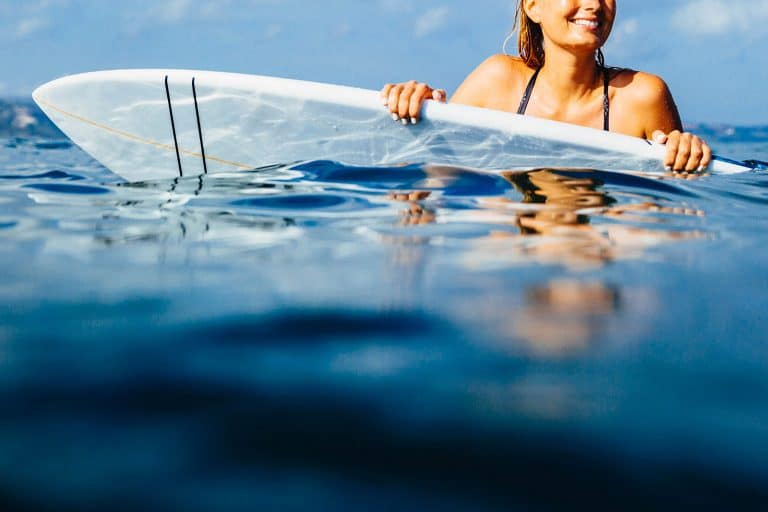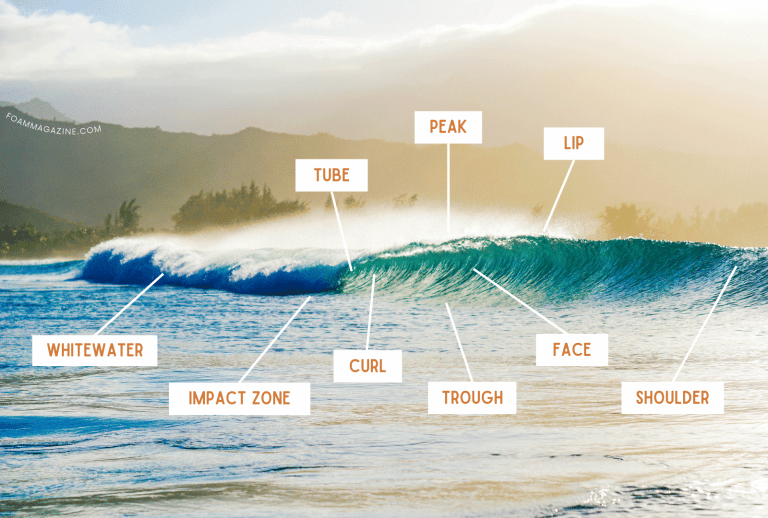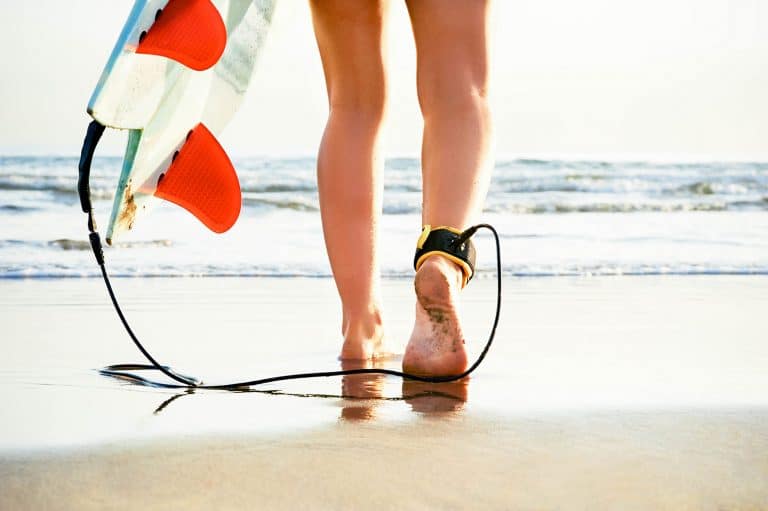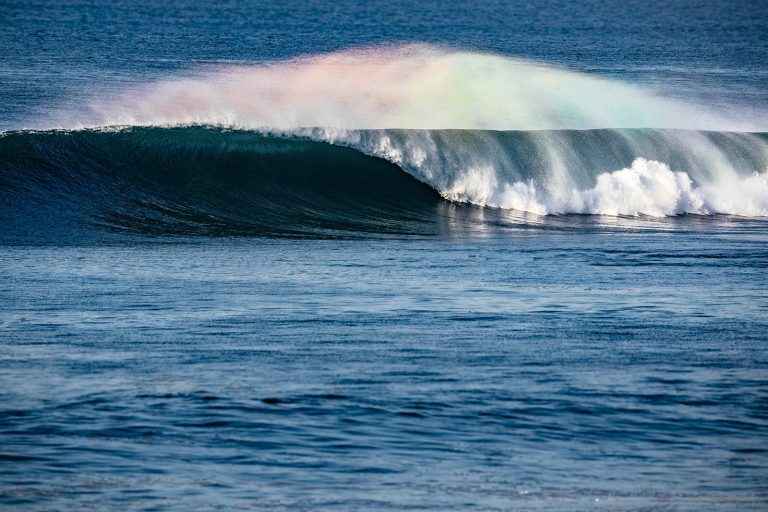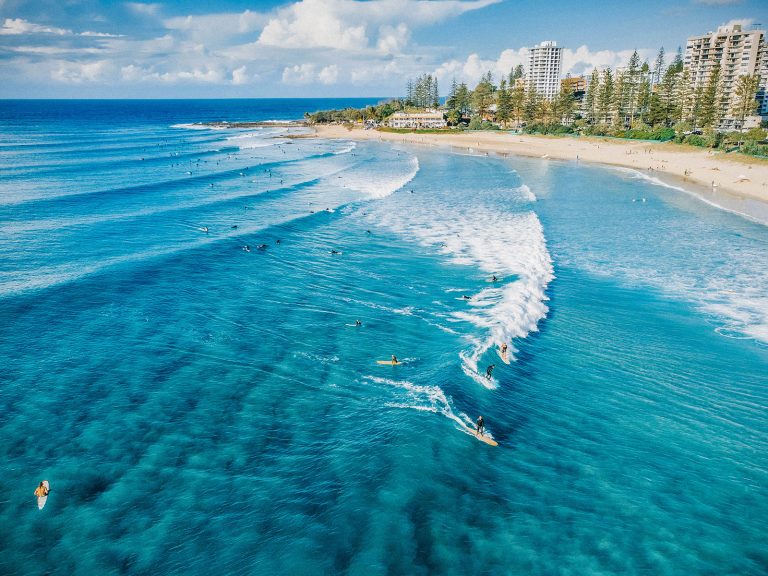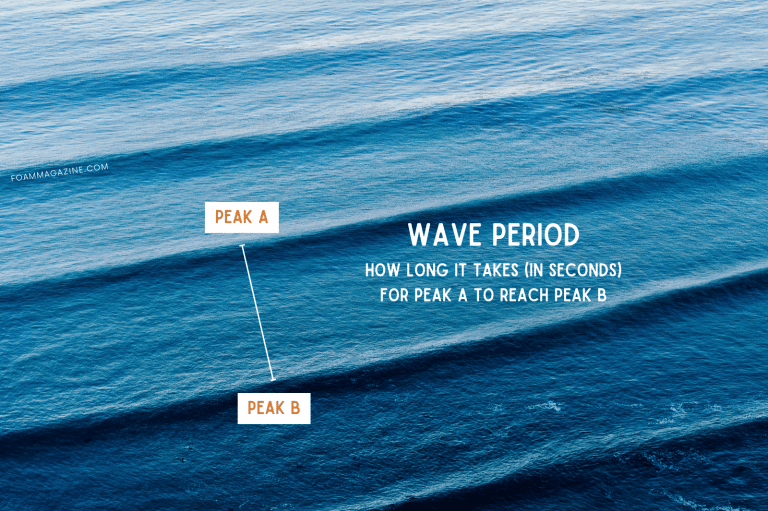Surfboard Rocker Explained: Why the Curve of a Surfboard Matters
“Rocker” is a term you often hear when it comes to surfboards, and it’s a helpful one to know because the amount of rocker (an important design feature for both longboards and shortboards) determines how the board glides through the water.
The rocker is the curve of a surfboard from its nose to its tail, and an easy way to remember that is to picture the bottom of a rocking chair: That upturned banana shape (also called a rocker on a rocking chair) is what a surfboard looks like from the side.
But what is it for? Does it really make a difference?
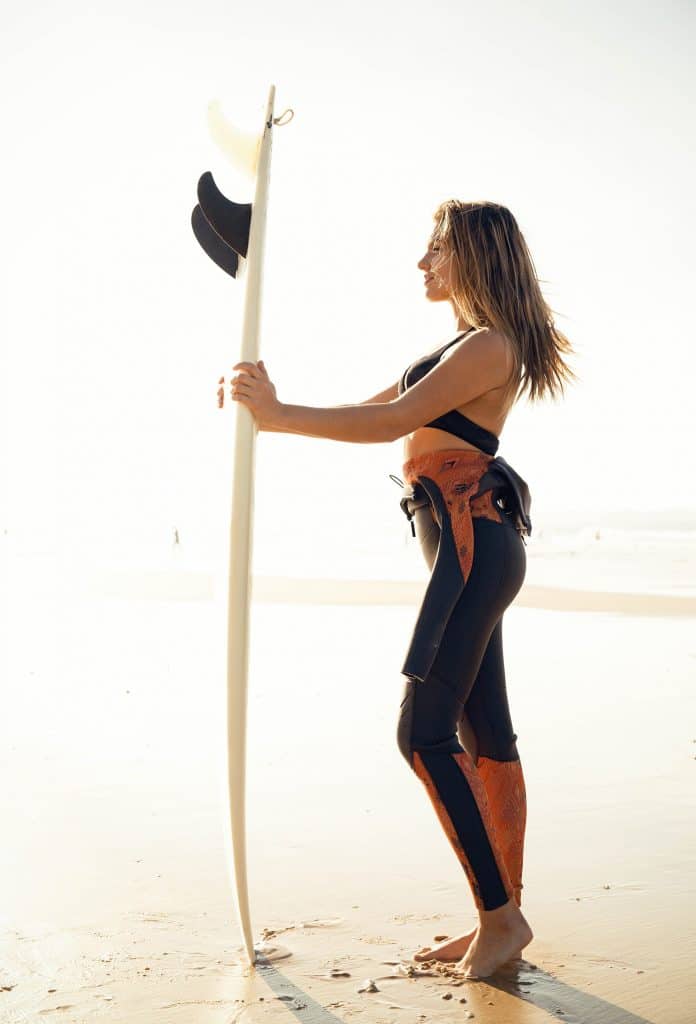
What does a surfboard rocker do?
Surfboards have three areas with rocker: the body, nose, and tail. A rocker simply allows a surfboard to “fit” on the contour of a wave. After all, since wave faces are curved, your board should have some degree of curvature as well.
Larger waves often have steeper and more curved faces, so a surfboard with more rocker allows you to drop into a wave without plunging the nose of your board immediately into the water.
On the other hand, smaller waves usually break more gently and have less of a curve, so you’d be fine on a board with very little rocker.
In general, experienced surfers prefer more rocker, and beginner to intermediate surfers prefer less rocker on their boards.
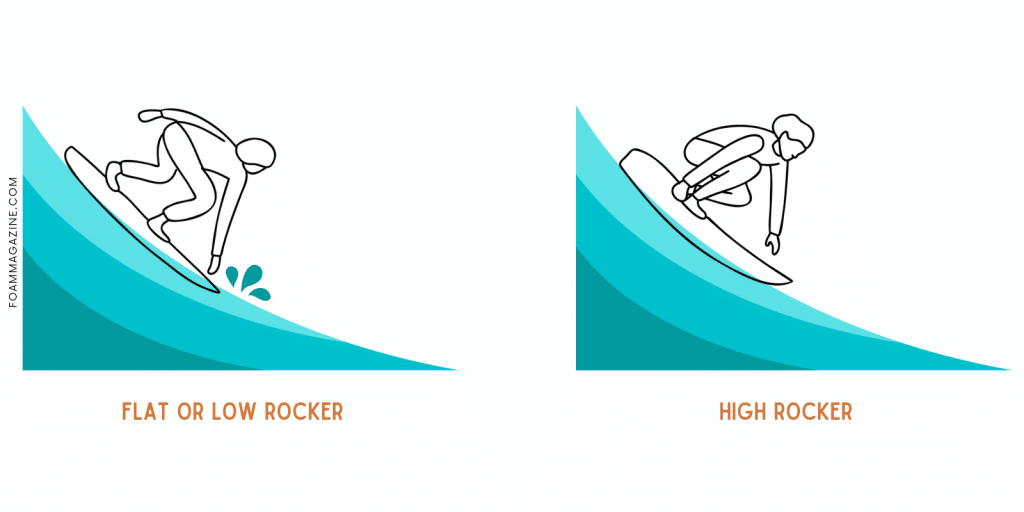
Flat or low-rocker surfboards
The good: A surfboard that’s flat (or has less rocker) has more surface area that touches the water, so it feels very stable when you’re on the board. Greater surface area helps you glide more smoothly on the water and go faster, which means an easier paddle out to the lineup, and an easier paddle for catching more waves (particularly weaker waves).
The bad: Because a flat or low-rocker surfboard has so much surface area, it’s harder to turn and less agile when moving through the water. If you’re surfing a steeper wave, a flat board is more likely to nosedive.
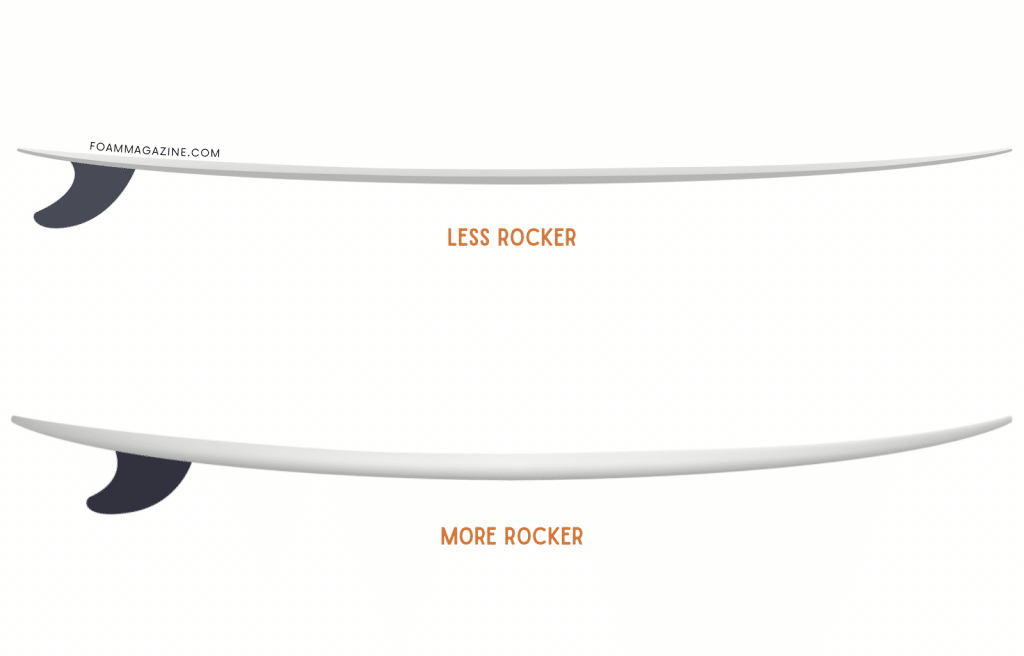
Heavy rocker or high-rocker surfboards
The good: With increased rocker comes increased responsiveness: a surfboard can change direction more easily, make tighter turns, and is simply more nimble in the water. More rocker makes late take-offs possible.
Boards with banana shapes are also easier to ride near the inside curl of a wave, so they’re ideal for advanced surfers who ride large, steep waves.
The bad: High-rocker boards are slower than flat surfboards. This is because less of the board sits on top of the water; the curved (center) part of the board is underwater, creating extra drag when you paddle.
If you catch a wave and go straight, your rocker will also slow you down. Experienced surfers who need speed usually tilt their boards and ride from rail to rail (edge to edge) to keep the curved part out of the water and reduce drag.
Nose rocker
The front part of a surfboard (the nose) also has its own degree of curvature. The more the nose points upward into the air (like elf shoes), the more rocker it has.
Heavy nose rocker helps keep the front end of the board on top of the water when a surfer drops into a steeper wave.
However, it’s harder to catch waves and harder to maintain your speed on a wave if you have more nose rocker.
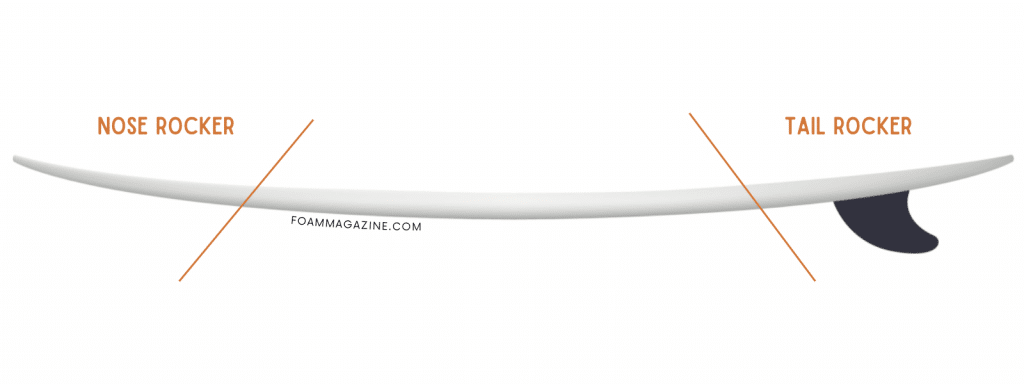
Tail rocker
Just like the nose, the tail has its own degree of curvature. More tail rocker makes the surfboard easier to pivot and turn. Tail rocker can also keep you from nosediving, as you can push down on the tail with your back foot and tilt the nose up when needed.
As with nose rocker, however, tail rocker slows you down and makes it harder to catch waves.
In short, choose your surfboard based on the general surfing conditions:
- Small, weak, or mushy waves: Surfboard with less rocker
- Large, powerful, or steep waves: Surfboard with more rocker
Curious about other parts of a board? I break down the whole anatomy of a surfboard here.

